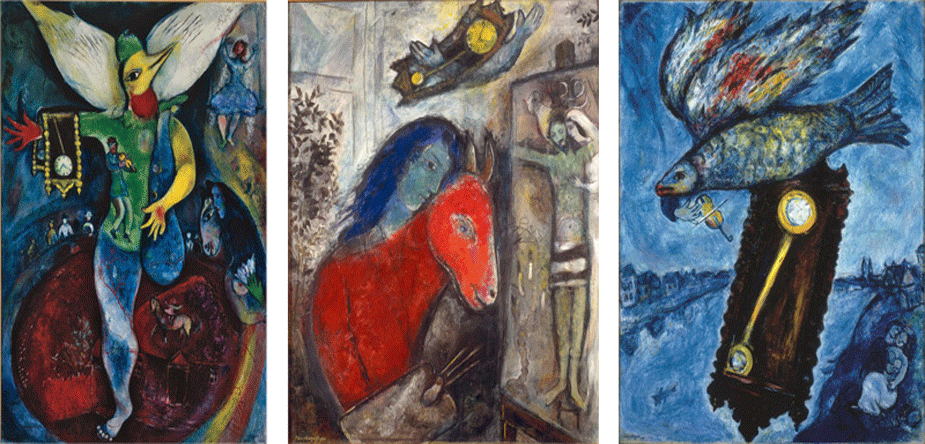 From September 15, 2013 through February 2, 2014, the Jewish Museum in New York will present for the first time in the U.S. an exhibit of Chagall: Love, War and Exile, exploring a dark and neglected period in the artist’s career, from the rise of fascism in the 1930s through 1948, years spent in Paris and then in exile in New York.
From September 15, 2013 through February 2, 2014, the Jewish Museum in New York will present for the first time in the U.S. an exhibit of Chagall: Love, War and Exile, exploring a dark and neglected period in the artist’s career, from the rise of fascism in the 1930s through 1948, years spent in Paris and then in exile in New York.
Marc Chagall (1887-1985), one of the foremost modernists of the 20th century, created his unique style by drawing on elements from richly colored folk art motifs, the Russian Christian icon tradition, Cubism and Surrealism. The Love, War and Exile exhibit illuminates an artist deeply responsive to the suffering inflicted by war and to his own personal losses and concerns. Most interesting and unexpected is the recurring appearance of the figure of the crucified Jesus as a metaphor for war, Jewish suffering and persecution. By the mid 1940s, Chagall returns to joyful, colorful compositions expressing the power of love.
The exhibition includes 31 paintings and 22 works on paper, as well as selected letters, poems, photos and ephemera, representing an intensely autobiographical work revealing Chagall’s complex emotions of longing, loss and joy. Chagall has said that his works created a material presence to form an alien reality. It is a most moving and memorable exhibit, not to be missed.

